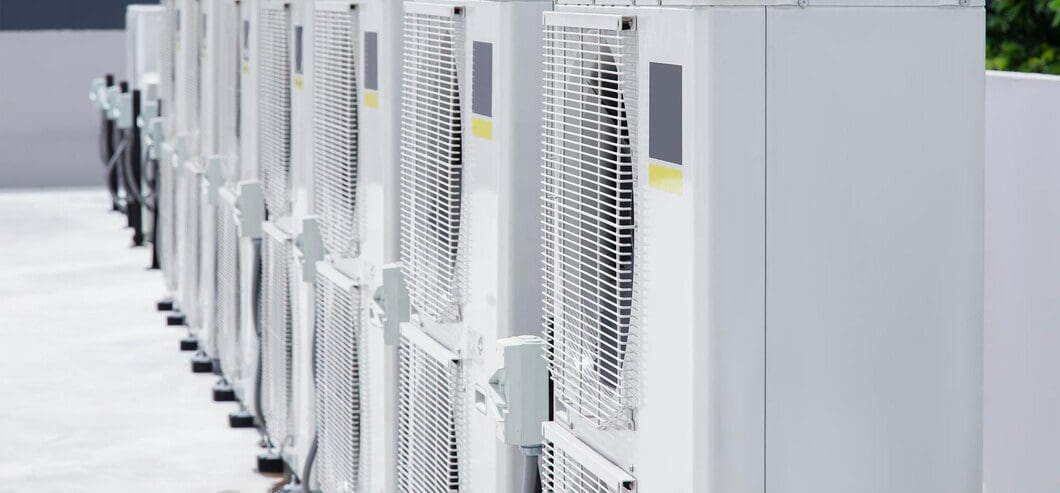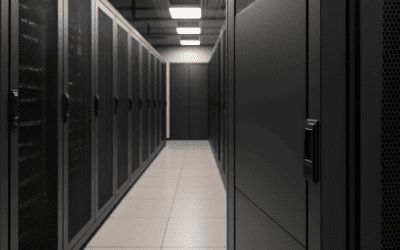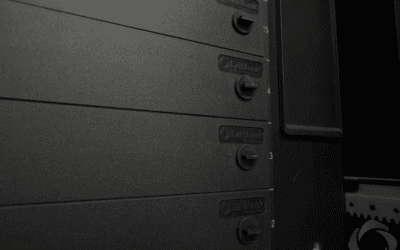Best Practice Guide for An Energy-Efficient Data Center
Creating an energy-efficient data center isn’t something you stumble into. These large systems take up entire rooms, and operations can happen 24/7, 365 days a year. It’s no secret that optimizing efficiency is ideal.
You can’t assume the latest tech is the best, as optimizing energy efficiency requires remaining updated on the “green perspective .” It also helps to think about the economic advantages an efficient data center design provides.
Below, we’ll cover the best practices to instill when designing an energy-efficient data center . We intend for this practice guide to give you efficient baseline design approaches for high-performance data centers. We’ll provide efficiency benefits, like efficient power supplies, benchmark measurements, space savings, and much more.
Keep reading to learn everything you need to know.
In the article:
[—ATOC—]
[—TAG:h2—]
What Would You Do To Make A Data Center Energy-Efficient?
Data center construction is much more than ensuring you have on-site generation power and space. The best designs should provide over a decade of reliable service to growing companies, but building it will take time, planning, and understanding the issues you may face.
Common considerations include:
- Optimizing the architecture for the present and future without under-committing or oversizing your resources
- Reducing power consumption by:
- Investing in efficient air conditioning
- Virtualizing servers
- Improving cooling architectures
- Sourcing inexpensive ways to improve cooling efficiency
- Steering clear of oversizing
- Standardizing power delivery for modularization, which helps simplify growth or change
- Environmental conditions, like humidity
- Understanding how you can save money by reducing your energy consumption
- Energy efficiency solutions to reduce strain on your electrical systems, reduce costs of such large power consumption, and maximize power distribution
The only way to guarantee you improve energy efficiency in your facility is to consider the electrical cost when creating design parameters. This will require extra steps of implementing tools available for modeling data center electrical costs and getting all the necessary information to the trusted decision-makers on your team.
You can start by calculating your energy efficiency savings.
Guide for Energy-Efficient Data Center Air Management
The equipment racks of data center systems can generate highly concentrated heat loads. To offset equipment heat, you must achieve precision airflow control through any rooms collecting said heat. Optimizing airflow will significantly improve energy efficiency and equipment reliability in any facility.
Data centers optimizing air management will minimize or eliminate the mixing of hot air rejected from a system and the cool air supplied. An efficient data center design should reduce operating costs and initial equipment investment, minimize heat-related interruptions or failures, boost energy performance, and allow a high power density capacity.
For proper air management, really consider the configuration of your heat exhaust and air intake ports, location of supply and returns, and prominent airflow patterns in the room.
Humidity
Don’t fall for the trap of over-controlling the humidity levels of your operating facilities. In existing facilities, humidification requires large power consumption and doesn’t operate as a centralized system. This decentralization may cause one unit to be humid while the other dehumidifiers.
But even so, humidity plays an essential role in the operation of your equipment, both the data center infrastructure and internal hardware. Humidity is an integral piece of the data center environment.
Humidity issues can include:
- Too little humidity results in damaging static discharge, resulting in detrimental life cycle cost issues
- Too much humidity gives way to moisture accumulation, which also compromises data center operators
Promising technologies for possible future design considerations should include optimized humidification systems. Examine potential power costs, if the system has humidity control, and the overall energy use required for operation.
Infrastructure & Design
Existing data centers won’t be the same in the future, especially as your company grows. Facilities’ loads have a critical nature, meaning data center loads elevate the importance of design decisions. Therefore, you must size the cooling requirements and power according to present needs while considering your growth and the data center life cycle. It’s safe to assume your data centre will last ten years on average.
Estimating your energy needs in a few years starts by understanding your initial IT requirements, the min and max future IT requirements, and a solidified growth timeline. Knowledge of this information helps make a growth profile you can refer to for physical infrastructure planning.
Additional information on infrastructure best practices guide for energy efficiency solutions includes:
- Oversizing: In other words, having far more cooling power capacity than needed for operating your system. This is one of the most common data center design situations, and it’s often the first issue that managers notice when they start planning modern data centers. Oversizing typically results from data center IT managers overcompensating for the future — an attempt to be proactive for the unknown future needs of your system.
- Avoiding the Issue: Approach the problem of an unknown future by designing an adaptable infrastructure. Especially pay attention to modularity during the creation of new data centers. Out of all energy-efficient design measures, how versatile your system is should be the most vital consideration.
Properly sizing your data center, and ensuring it’s equipped with adaptable functionality, should be your starting point.
Benefits include:
- Maintain redundancy of different configurations in different parts of your data center
- Eliminate the need for raised floors
- Potentially increase the lifespan as modularity boosts flexibility and functionality, meaning your system adapts to changing environments
Cooling Options When Operating Data Centers
Cooling equipment has an enormous task — it’s responsible for most energy consumption in these systems. For engineers specializing in data center infrastructure, discovering the best ways to improve power usage effectiveness (PUE) is vital. Improving PUE makes cooling a primary target for energy efficiency options.
When sourcing cooling equipment, note that CRACs and chillers consume the most energy. Plus, CRACs may utilize outside air, but you’re risking outdoor contamination if you don’t know your risk factors.
Our best practices guide for energy-efficient data centers will provide viable alternatives for cooling right below:
- Evaporative Cooling: In this system, cool water is introduced to hot air. The cold water evaporates and draws heat out of the air. Direct evaporative cooling requires a misting system, while indirect evaporative cooling includes a wet material. It’s highly efficient in terms of energy costs but involves a lot of water.
- Immersion Cooling: A primary future design consideration. Immersion systems submerge data center hardware into a non-flammable, non-conductive dielectric fluid.
A possible future design consideration involves renewable energy in the form of heat recovery. It’s a system increasingly used to reduce the cooling and heating demands of buildings and could prove useful in most data centers.
FAQs
Here are some frequently asked questions when it comes to energy efficiency in a data center:
How Efficient Are Data Centers?
These facilities consume about 2% of the United State’s total – 10 to 50 times higher than standard office spaces.
What Is HVAC In A Data Center?
Every day HVAC systems are no match for the heat generated by data centers. Specialized equipment, like CRACs and CRAHs, are used.
What Is The Most Efficient Cooling Technology For Data Centers To Deal With Their Energy Uses?
Immersion cooling systems are considered the most energy-efficient data center design solution. They don’t require compressors, like computer room air conditioners, and don’t need an ample water supply, like evaporative cooling technology.
Increasing Data Center Energy Efficiency Practices Guide
Thank you for reading through our efficient design suggestions. Investing in the energy efficiency solutions discussed in our practices guide results in cost-effective saving opportunities and high-performance data centers.
All-in-all, our world requires these extensive systems. Therefore companies should take the time to consider the design carefully. Opting for energy-efficient solutions is in the best interest of everyone.




